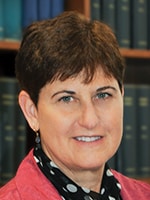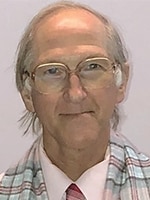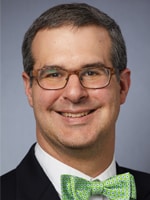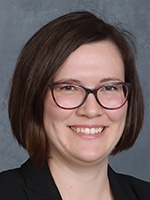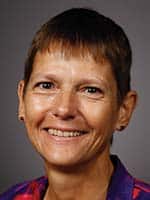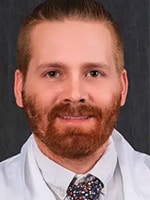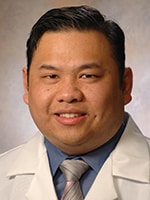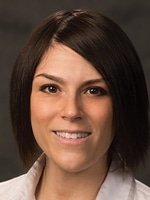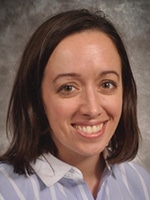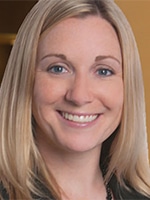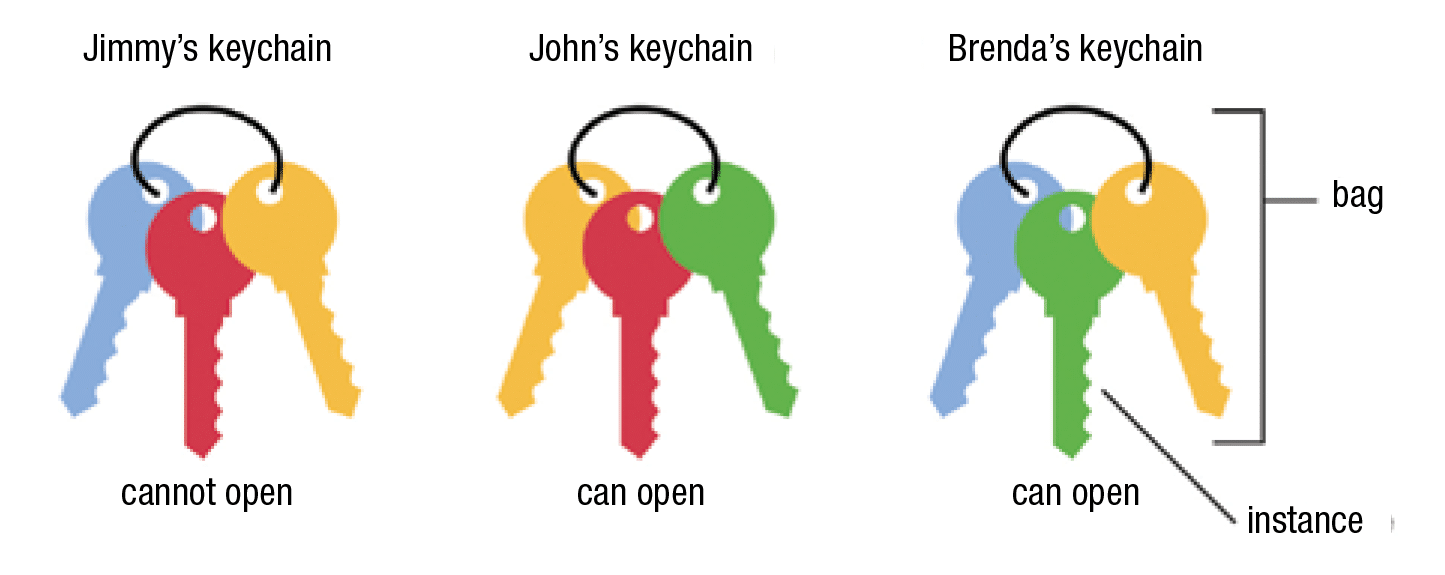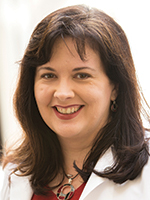April 2024—Transitioning to digital pathology can seem complex and costly. And for some, but not all, laboratories, cost in particular can be a barrier to adoption. So how do you determine which camp your lab falls into? You calculate, according to Orly Ardon, PhD, director of digital pathology operations at Memorial Sloan Kettering Cancer Center.
Read More »Newsbytes
March 2024—While Dr. Seuss’ assertion that “the more that you read, the more things you will know” is generally accurate, it doesn’t address the fact that how information is presented affects comprehension, a truism that is not lost on Edward Klatt, MD, who knows whereof he speaks when it comes to sharing information on patient portals.
Read More »Newsbytes
February 2024—The key to using ChatGPT and other large language models effectively in pathology is understanding not only what they are designed to do but, just as importantly, what they are not designed to do, says Eric Glassy, MD, medical director at Affiliated Pathologists Medical Group, Rancho Dominguez, Calif., and past chair of the CAP Information Technology Leadership Committee.
Read More »Newsbytes
January 2024—When the medical microbiology laboratory at Yale-New Haven Hospital makes operational changes, it uses data analytics to monitor their impact. Yet the process of implementing laboratory analytics can be challenging.
Read More »Newsbytes
December 2023—While many dismiss the saying “Nothing lasts forever” with a simple shrug, those three words may cause angst in those anticipating the demise of their laboratory information system.
Read More »Newsbytes
November 2023—“The best way to have a good idea is to have a lot of ideas,” according to Linus Pauling, a chemist and chemical engineer who, among other accomplishments, helped create a form of synthetic plasma. But when there is no structure in place to nurture those ideas, the result can be “a lot of people focused in a lot of different directions,” says Sky Soom, innovation analyst with Sonora Quest Laboratories.
Read More »Newsbytes
Ocotber 2023—Health care technology companies, by and large, are eager to share product metrics—that is, standalone product performance—with potential pathology lab clients but less eager to share how those technologies may impact laboratory workflow and decision-making.
Read More »Newsbytes
September 2023—The musician Frank Zappa said, “One size does not fit all,” a declaration that counters the claims of many clothing manufacturers and holds true for a variety of products, including, one could argue, digital scanners.
Read More »Newsbytes
August 2023—How often do pathology departments underbill insurance companies for their services? And how much money do they lose because of underbilling mistakes? A prototype dashboard at Dartmouth Hitchcock Medical Center aims to answer those questions by using natural-language processing and machine-learning algorithms to flag pathology cases that are underbilled.
Read More »Newsbytes
July 2023—The Permanente Medical Group, Oakland, Calif., has launched the Kaiser Permanente Northern California Division of Research Augmented Intelligence in Medicine and Healthcare Initiative Coordinating Center, or AIM-HI. The program will support a national research effort focused on evaluating artificial intelligence and machine-learning algorithms to enhance diagnostic decision-making in health care.
Read More »Newsbytes
June 2023—The time it takes to read through numerous pathology reports to find nuggets of critical information buried within narrative sections of text is tantamount to the time it takes for carbon atoms to turn into diamonds—or so it may seem to those tasked with digging for medical information.
Read More »Newsbytes
May 2023—In 2020, when much of the world was locked down due to the pandemic, researchers at the University of Texas Medical Branch, in Galveston, began helping pharmaceutical companies evaluate the effectiveness of COVID-19 vaccines using a neutralizing antibody assay they had developed. A hot minute later (or so it seemed), some UTMB pathologists concluded that their patients might want to know if they had neutralizing SARS-CoV-2 antibodies.
Read More »Newsbytes
April 2023—At the medical center of the University of Medicine and Pharmacy at Ho Chi Minh City, patients are not screened for bladder cancer using urine cytology because the pathology department does not have the capability for such screening. But that may soon change, thanks to an organization focused on using digital pathology to increase the availability of pathology education resources in developing countries.
Read More »Newsbytes
March 2023—Interpreting digital pathology images requires a trained eye, but a pathologist and radiologist at Moffitt Cancer Center are working on a tool to make these and other medical images easier for patients to access and understand.
Read More »Newsbytes
February 2023—Magic, joy, wisdom, and goats. Words seldom—if ever—used together in describing a pathology-focused website. Until now.
Read More »Newsbytes
January 2023—The acclaimed film composer John Powell said, “Communication works for those who work at it.” A sentiment to which Yonah Ziemba, MD, adhered when communicating data via charts, graphs, and tables during his pathology fellowship—benefiting himself and others.
Read More »Newsbytes
December 2022—To safely and effectively extend the process of conducting point-of-care testing to staff from various hospital departments is no easy feat. That’s why four full-time employees at Children’s Hospital Los Angeles oversee POC testing, relying heavily on middleware, analytics, and exception-management tools.
Read More »Newsbytes
November 2022—Bias—a type of prejudice that may go back to the beginning of humankind—has, in recent years, been the focus of attention with regard to developing machine-learning algorithms for clinical laboratory testing.
Read More »Newsbytes
October 2022—Cater to your audience, while sage advice, can be a challenging proposition when it comes to choosing a biobank information system. Unlike clinical laboratories, which use lab information systems that tightly link specimen testing results to patient information in the EHR, biobanks need specimen-centric systems that can store and track samples for research purposes. Biobanks, like research laboratories, need the functionality typically found in laboratory information management systems, or LIMS, says Raj Dash, MD, pathologist and director of laboratory informatics strategy, Duke Health.
Read More »Newsbytes
September 2022—Do you want to play a role in solving a problem or improving a process in your laboratory via machine learning or artificial intelligence but don’t know where to begin? If so, take some time to learn, listen, share, and, perhaps, have a cup of coffee, says Scott Doyle, PhD, biomedical engineer at the State University of New York at Buffalo.
Read More »Newsbytes
August 2022—Transfusion medicine specialists at Phoenix Children’s Hospital may be used to trending laboratory biomarkers for sickle cell disease patients in their heads, but a dashboard supporting red blood cell exchange procedures for such patients eases the burden on their cerebral cortices.
Read More »Newsbytes
July 2022—If a machine-learning algorithm is trained to help detect cancer in whole slide images at one health care location, shouldn’t the same algorithm work on digital slides from a similar patient population at another site?
Read More »Newsbytes
June 2022—Laboratories seeking a means to query their repository of archival anatomic pathology reports would do well to follow the advice of former tennis star Arthur Ashe: “Start where you are, use what you have, do what you can.”
Read More »Newsbytes
May 2022—If the pandemic proved nothing else, it proved that necessity is the mother of invention. And invention was top of mind when two like-minded employees from different institutions tackled education and training in blood banking and transfusion medicine during the past two years.
Read More »Newsbytes
April 2022—Michelle Stoffel, MD, PhD, supports the use of Excel spreadsheets in some areas of laboratory medicine, but not necessarily as a laboratory workflow tool. It’s a realization she came to when, as a clinical informatics fellow at the University of Washington School of Medicine, she led the charge to revamp the workflow for the immunology laboratory’s Merkel cell antibody panel.
Read More »Newsbytes
March 2022—Medical professionals and, more importantly, patients at Virginia Commonwealth University Medical Center are benefitting from a synoptic reporting system that allows the pathology lab to assess the quality of all bone marrow specimens that it receives.
Read More »Newsbytes
February 2022—Ask TRUU-Lab founder Ila Singh, MD, PhD, what’s in a name and she will provide an answer that differs greatly from that of Shakespeare’s Juliet Capulet. According to Dr. Singh, the answer can be too much information, not enough information, or ambiguous terminology—when referring to lab test names, that is.
Read More »Newsbytes
One pathologist’s foray into 3D printing
January 2022—The use of three-dimensional printing in the pathology lab may still be in its infancy, but pathologist Danielle Lameirinhas Vieira Maracaja, MD, and her anesthesiologist husband have been affirming its value to pathologists, and the medical community in general, for years. Dr. Danielle Maracaja, a pathologist at Atrium Health Wake Forest Baptist, Winston-Salem, NC, and assistant professor of pathology at Wake Forest School of Medicine, has been working alongside her husband, Luiz Maracaja, MD, associate professor of anesthesiology at the same hospital and medical school, in designing and producing medical tools using 3D-printing technology for more than five years. They took on one of their largest projects in early 2020, when Dr. Danielle Maracaja was a pathology fellow at Yale University School of Medicine and COVID-19 cases were spiking.
Newsbytes
December 2021—Like death and taxes, cyberattacks targeting health care organizations are a certainty, but taking proactive breach mitigation measures and developing a thorough response plan can lessen, or even prevent, a devastating blow.
Read More »Newsbytes
November 2021—The following is an edited excerpt of the article “Attention-based deep multiple instance learning,” written by Jonathan Glaser, a recent graduate of the computer science and biotechnology master of science degree programs at New York University Tandon School of Engineering, in Brooklyn. The excerpt delves into how aspects of artificial intelligence can transform health care, and pathology in particular. To read the full article, go to https://tinyurl.com/AI-based-learning.
Read More »Newsbytes
October 2021—Given Penn Medicine’s reputation for high operational standards, it’s not surprising that the developers of its new Center for Applied Health Informatics set lofty goals for the center: coordinate the efforts of multiple internal technology-related groups to further improve systems institutionwide and position the health system as a global leader in health informatics.
Read More »Newsbytes
September 2021—When Stephen Hewitt, MD, PhD, went down the COVID-19 rabbit hole in early 2020, little did he know about the long-term value of a comprehensive COVID-19 digital pathology repository—and how such a project would come to fill his days and, occasionally, nights.
Read More »Newsbytes
August 2021—The Office of the National Coordinator for Health Information Technology released last month the United States Core Data for Interoperability version two, or USCDI v2, a standardized set of health data classes and constituent data elements for nationwide, interoperable health information exchange.
Read More »Newsbytes
July 2021—As the role of informatics in the practice of medicine continues to grow, so does the need to move formalized informatics education from the category of luxury to necessity, says Bruce Levy, MD, associate chief medical informatics officer at Geisinger Health System, Danville, Pa., and professor and program director of the clinical informatics fellowship at Geisinger Commonwealth School of Medicine.
Read More »Newsbytes
June 2021—ROI is the holy grail of pathology laboratories purchasing laboratory information systems and analyzers. The abbreviation stands for “return on investment,” but it should also mean “rarely obtained information,” jokes health care consultant Dennis Winsten.
Read More »Newsbytes
May 2021–Laboratory information systems contain a wealth of diagnostic patient case data, but accessing it promptly can be difficult if not impossible—without a workaround, that is.
Read More »Newsbytes
April 2021—The rewards of data analytics can be sizable, but so can the challenges of extracting data, transforming it, and loading it into the appropriate systems to facilitate the functionality.
Read More »Newsbytes
March 2021—For many pathologists, smartphones are an untapped resource. Although the screen is significantly smaller than a computer display, the device offers much of the same functionality to enhance the practice of pathology as its larger cousin but with the benefit of pocket portability.
Read More »Newsbytes
Feburary 2021—Laboratories involved in requests for proposal for total lab automation systems may want to consider the words of wisdom of Francis of Assisi: “For it is in giving that we receive.”
Read More »Newsbytes
January 2021—It’s a maxim for any laboratory automation project: Don’t automate until you analyze—the efficiency of current processes, that is. And ARUP Laboratories’ chief operating officer, Jonathan Genzen, MD, PhD, has taken it to heart as the laboratory gears up for large-scale automation projects this year.
Read More »Newsbytes
New NovoPath CEO settled in and taking questions December 2020—CAP TODAY publisher Bob McGonnagle recently spoke with Promise Okeke, who took the helm as CEO of NovoPath last summer. Here’s what Okeke had to say about NovoPath’s case distribution module, customer service, and the advantages of offering a best-of-breed system, among other topics.
Read More »Newsbytes
November 2020—As LigoLab was designing a direct-to-consumer portal for laboratory testing early this year, company CEO Suren Avunjian turned his focus to when in 2021 he would release it, not knowing what was around the corner. But as the number of COVID-19 cases grew to pandemic proportions, Avunjian realized he could and should redesign the portal to streamline SARS-CoV-2 testing.
Read More »Newsbytes
October 2020—Many prolific Twitter users describe the social media site as a time sink, but Andrew Schaumberg, PhD, begs to differ. After observing pathologists turn to Twitter to seek advice about difficult patient cases, he developed Pathobot, a free, artificial intelligence-driven search tool on Twitter that is designed to help pathologists connect with colleagues faster.
Read More »Newsbytes
September 2020—While the SARS-CoV-2 outbreak has led many long-standing companies to zig instead of zag, it caused the computational and digital pathology startup Crosscope to switch gears in the midst of developing its first product.
Read More »Newsbytes
August 2020—At Sonora Quest Laboratories, working backward has been a key strategy for leaping forward. Little by little, the Arizona-based integrated laboratory system has been retracing paper trails and assessing established processes as part of an ambitious plan to eliminate paper use across its seven commercial laboratories, 28 hospital labs, and more than 75 patient service centers.
Read More »Newsbytes
July—In the early days of the COVID-19 pandemic, when the University of California, Berkeley's Innovative Genomics Institute decided to rapidly shift gears from conducting research to testing the community for SARS-CoV-2, some insiders may have thought the university was biting off more than it could chew under a tight timeframe. Yet a look at the lab 23 days later surely had any doubters eating their words.
Read More »Newsbytes
June 2020—The global market for health care chatbots has been growing at a fairly rapid pace in recent years, but “COVID-19 is the thing that’s going to make chatbots mainstream,” says Greg Kefer, chief marketing officer at the chatbot company LifeLink Health. A 2019 Allied Market Research report, released just months prior to the COVID-19 pandemic, projected the health care chatbot industry would reach $345.3 million by 2026, a steep rise from 2018, when it garnered $116.9 million (www.alliedmarketresearch.com/healthcare-chatbots-market). But now, the COVID-19 pandemic has put into sharp relief one of the key value propositions of chatbots—unlimited scale, which means the timeline for adoption “just got massively compressed,” says Kefer, whose software-as-a-service company develops enterprise-level chatbots for large health care organizations.
Read More »Newsbytes
May 2020—Imagine the potential educational benefits of pathology residents being able to see the precise path that the eyes of experienced pathologists take as they scan a whole slide image. Preliminary research has suggested that showing residents visual representations of a pathologist’s eye-tracking movement overlaid over a whole slide image can impact how they learn, says Sharon E. Fox, MD, PhD, a pathologist at the Southeast Louisiana Veterans Healthcare System and associate director of research and development, Department of Pathology, Louisiana State University Health Sciences Center.
Read More »Newsbytes
R programming language gains steam in pathology labs April 2020—Among laboratories focused on expanding data analytics, the statistical programming language R has a loyal user base that is steadily growing. “There is a crew of us that are really trying to show the utility of R for laboratories,” says Stephen Master, MD, PhD, chief of the Division of Laboratory Medicine and director of the Michael Palmieri Laboratory for Metabolic and Advanced Diagnostics at Children’s Hospital of Philadelphia.
Read More »Newsbytes
March 2020—At trauma hospitals, simplicity is considered a virtue. That’s why when Jansen Seheult, MD, and his colleagues decided to use machine learning to predict massive transfusion needs, they chose a decision tree algorithm. “It was easy to implement as if/then rules, and it didn’t require computational resources to deploy,” says Dr. Seheult, clinical assistant professor of pathology at the University of Pittsburgh Medical Center.
Read More »Newsbytes
Drone delivery of lab samples: from progress at WakeMed to interest elsewhere
February 2020—After nearly a year of a drone buzzing through the air to deliver specimens from the Raleigh Medical Park surgery center to the laboratory at the flagship Raleigh campus of WakeMed Health and Hospitals a quarter-mile away, WakeMed is looking to expand its drone program. Read More »Newsbytes
January 2020—Pathologist Ron B. Schifman, MD, practices what he preaches and preaches about what others practice relative to implementing such computer-based test-utilization management techniques as soft stops, hard stops, and those that fall in between. In a 2019 American Association of Clinical Chemistry presentation on strategies and tactics for test-utilization management, and in an interview with CAP TODAY, Dr. Schifman offered insights into a variety of information technology-based interventions.
Read More »Newsbytes
How a local startup solved a lab’s slide-management issues December 2019—When Alex Bushell, the young CEO of a Canadian startup, approached Bernard Schaan, the now-retired laboratory manager at Peterborough Regional Health Centre, in 2017, to ask what problem they might tackle together, Schaan mentioned an issue that had nagged him for years: histology slide filing and retrieval. Tasked with filing between 125,000 and 135,000 slides per year, “I thought the process could be automated and had been asking various sales reps if there’s anything out there—and they said no, there wasn’t,” Schaan says.
Read More »Newsbytes
Francisco Partners to acquire Orchard Software
November 2019—Francisco Partners, a technology-focused private equity firm, announced Sept. 30 its intent to acquire Orchard Software. CAP TODAY publisher Bob McGonnagle, on Oct. 2, spoke with Orchard founder and CEO Rob Bush and with Billie Whitehurst, who will succeed Bush as CEO. Whitehurst most recently was senior vice president at Netsmart. Here is what they, and Curt Johnson and Kerry Foster, of Orchard, had to say about the acquisition.
Newsbytes
Digital health education: imperfect to imperative: October 2019—Arlen Meyers, MD, MBA, is a passionate advocate for educating medical students and practicing physicians about digital health technologies and their role in patient care. Without increased emphasis on organized digital health education, the medical field cannot fully embrace such technologies, says Dr. Meyers, president and CEO of the Society of Physician Entrepreneurs and co-editor of Digital Health Entrepreneurship, released this year by Springer Books.
Read More »Newsbytes
September 2019—It’s a simple and nearly airtight communication strategy: Tell someone something verbally and then share the same message with them in writing to make sure they understood you. Following this logic, a group of surgical pathologists at the University of Minnesota Medical Center made an assumption that if their intraoperative consultation results were made available to surgeons in written form during surgery as documentation of verbal communication—either in person or via telephone—the frequency of communication errors would be reduced.
Read More »Newsbytes
August 2019—From concept to curriculum: PIER going strong five years later: In the five years since its launch, Pathology Informatics Essentials for Residents, or PIER, has continued to serve as a much-needed guide for pathology residents and program directors who otherwise would be navigating the waters of informatics training without a compass.
Read More »Newsbytes
Digital pathology: from education to implementation July 2019—Matthew Hanna, MD, is well aware that not all pathologists embrace the idea of using digital pathology for clinical applications. “I’m very confident it’s a familiarity issue,” says Dr. Hanna, clinical instructor in breast pathology and informatics at Memorial Sloan Kettering Cancer Center.
Read More »Newsbytes
June 2019—How Orchard Software is helping labs address transgender care: Establishing useful reference ranges for cisgender patients can be difficult, and for transgender patients it can be even more challenging. Add to this the desire to show the reference ranges for transgender patients as separate categories, distinct from the values for male and female patients, and the challenges mount for some medical centers. Read more.
Read More »Newsbytes
May 2019—Excel tool color codes persistent problems in lab test ordering: Variety may be the spice of life, but in the pathology lab, it may present a conundrum. Case in point: The LIS is a rich source of data about lab test utilization, but managing millions of disparate pieces of data to assess test utilization can be difficult. But not to Tylis Y. Chang, MD, of Northwell Health.
Read More »Newsbytes
April 2019—The R&B classic “Time Is on My Side” may be an anthem for rejected lovers, but a new virtual reality teaching tool that allows students to “visit” the pathology lab without leaving the classroom may soon have NYU medical students humming the song’s refrain.
Read More »Newsbytes
Building a lab or modernizing? Don’t forget the following March 2019—Building a new pathology lab or revamping an existing one gives laboratory decision-makers an opportunity to rethink information technology infrastructure and address persistent problems, plan for new technology, and improve processes.
Read More »Newsbytes
February 2019—Digital pathology RFPs: from the questions to selections: To those who request the information and those who supply the information, requests for proposal, better known as RFPs, can be groanworthy. Yet laboratories planning to purchase a digital pathology system for clinical use should seriously consider going through the painstaking process, even if their institutions don’t require it, says Liron Pantanowitz, MD, vice chair of pathology informatics at the University of Pittsburgh Medical Center.
Read More »Newsbytes
January 2019—Virtual tumor board platforms: a game changer for cancer case review: If Suneal Jannapurredy, MD, had been able to read the patient’s outside radiology report prior to breast tumor board, he would have re-examined the gross specimen to determine whether, as the other providers were now telling him, there was a second area of focus he hadn’t included in his presentation.
Read More »Newsbytes
In molecular testing labs, gaps between actual and desirable LIS capabilities
December 2018—Flashback to 2013: Alexis B. Carter, MD, then director of pathology informatics at Emory University Hospital, was contemplating whether other pathology labs nationwide were facing the same challenges managing molecular testing data as she and her colleagues. So she decided to find out. Dr. Carter conducted a survey, and the responses confirmed her suspicions: Most laboratory information systems fall short in providing the infrastructure for complex molecular and genomic testing.
Newsbytes
How Henry Ford core lab uses bottom-up communication November 2018—When Henry Ford Health System started planning its core laboratory’s automation line four years ago, aware that it needed to take Lean to the next level, it enlisted frontline laboratory employees in a development process that used the strategies of Hoshin Kanri and kaizen. Read more.
Read More »Newsbytes
Innovation labs: different means to the same end October 2018—What’s the best way for a hospital to kill a health care improvement-related idea? Some say (tongue in cheek) send it to committees, meetings, suggestion boxes, or the like. Read more.
Read More »Newsbytes
Nebraska informaticians mine and translate genomic data
September 2018—More than five years have elapsed since clinicians at the University of Nebraska Medical Center approached the institution’s informatics department with a problem. They wanted to more easily access structured genomic data stored in the EHR system for the diagnosis of cancer patients.
Newsbytes
New digital pathology certificate program educates ‘from A to Z’
August 2018—While there’s a lot of buzz about the growth of digital pathology, its steep learning curve is a potential impediment to implementation. Recognizing this, the National Society for Histotechnology, in collaboration with the Digital Pathology Association, launched in May a web-based digital pathology certificate program designed to provide both a broad overview of digital pathology and a deep dive into the details.
Newsbytes
July 2018—How a geospacial tracking system is closing the distance at Michigan lab: This summer, when the Michigan Medicine Department of Pathology moves the last of its laboratories to a new campus four-and-a-half miles from the existing University Hospital laboratories in Ann Arbor, it will kick its new PathTrack Lean-influenced real-time geospatial tracking system into high gear. Developing the system, which will monitor an anticipated 6,000 to 10,000 specimens every day, has been “a monumental effort,” says Ulysses J. Balis, MD, director of the health system’s division of pathology informatics.
Read More »Newsbytes
June 2018—Electronic device shows promise for identifying pathology specimens: While barcodes and radio-frequency identification are considered the workhorses of pathology specimen identification, a new technology, nearly two decades in the making, may soon get a piece of the action.
Read More »Newsbytes, 5/18
May 2018—Vendor neutral archives: A fit for the pathology lab? Whether the initialism VNA will become as recognizable as the acronym PACS in the pathology field remains to be seen, but pathologists and vendors alike are considering how vendor neutral archives may benefit the pathology lab.
Read More »Newsbytes, 4/18
April 2018—Data-extraction system demonstrates potential for pathology laboratories: Just as parents instill in their children a desire to improve themselves, in part through interactions with others, some software developers are “teaching” their tools to interact and adjust accordingly.
Read More »Newsbytes, 3/18
March 2018—How hospitals use savvy and software as a phishing net: We all know we shouldn’t click on suspicious emails, but suppose you see an email from your department of human resources with an attached document about a new dress code. You open it, thinking “What new dress code?” And now you’ve infected the hospital’s computer system with a virus.
Read More »Newsbytes, 2/18
February 2018—The many facets of a laboratory IT budget: Creating an information technology budget for the laboratory may seem like a fairly straightforward, if painstaking, exercise. But a number of factors that can affect the laboratory’s bottom line are frequently overlooked during the budgeting process, according to two health care consultants who spoke with cap today.
Read More »Newsbytes, 1/18
January 2018—Why pathologists shouldn’t ‘pass the baton’ with IT: It may be tempting to stay in your comfort zone and leave the technology decisions to the information technology experts. But pathologists who abdicate oversight of IT projects within their departments are setting up those projects for failure, says John H. Sinard, MD, PhD, professor of pathology and medical director of pathology informatics at Yale University School of Medicine.
Read More »Newsbytes, 12/17
December 2017—Hospital cyberattack a brief setback with lasting gain: A cyberattack that paralyzed the computer systems at a rural West Virginia hospital last summer could have brought the laboratory’s work to a screeching halt. But that didn’t happen, thanks, in part, to the downtime procedures in place throughout the laboratory and the low-tech nature of the lab’s pathology operations.
Read More »Newsbytes, 11/17
November 2017—Software-validation products: finding a glitch before it’s a hitch: The idiom “time is of the essence” isn’t lost on Lisa Adams, senior information technology systems analyst at Banner Health and a believer in the need for speed when identifying software glitches and errors.
Read More »Newsbytes, 10/17
October 2017—Clinical analytics: from benefits attained to software available: While LIS and laboratory billing software vendors tout the power of their business analytics tools to boost the laboratory’s bottom line, a newer application of information technology—clinical analytics—is elevating the role of the laboratory in personalized medicine.
Read More »Newsbytes, 9/17
September 2017—Why so few women in pathology informatics? Alexis Carter, MD, did not realize she was a rare bird when, as a resident more than a decade ago, she acted on her penchant for health informatics. Dr. Carter had become interested in the field while working under a clinical chemist who developed computer programs that notified him when instruments weren’t performing as expected or when a lab result required further investigation.
Read More »Newsbytes, 8/17
August 2017—Health record security at root of personal grid architecture: Imagine the risks credit reporting agencies would face if they did not maintain databases of consumer transactions but instead requested information from various creditors and assembled credit reports from that information in real time. Yet that’s how health information exchanges typically work. And that, says William Yasnoff, MD, PhD, a consultant, physician, and computer scientist, is not a safe or effective approach.
Read More »Newsbytes, 7/17
July 2017—Machine learning: What will it do for pathology? If finance, online retail, and other industries are “embracing” machine learning, then the medical field is still in the polite handshake phase, despite the potential of this form of artificial intelligence to revolutionize health care. Recent research endeavors highlight just a few examples of what machine learning, which allows computers to analyze data, detect patterns, and build algorithms to guide decision-making, can contribute to the field of pathology alone.
Read More »Newsbytes, 6/17
June 2017—Making the most of classroom technologies to train residents: Google the phrase “millennials killed” and you’ll discover a genre of Internet clickbait claiming the generation in question has rejected a lengthy assortment of previously popular items, from “the suit” to “napkins” to the “hangout sitcom.”
Read More »Newsbytes, 5/17
May 2017—What R and Python programming languages bring to the table; Philips and PathAI partner on artificial intelligence offerings; Hc1.com and 4medica announce collaboration; Technidata releases new generation of middleware
Read More »Newsbytes, 4/17
April 2017—New open-access website offers a treasure trove of digital slides; HL7 collaborates with Google; Health Catalyst and Regenstrief to advance text analytics technology; Corista teams with Elsevier to augment digital platform; Seacoast enhances system for document management
Read More »Newsbytes, 3/17
March 2017—Pathologist to ‘name names’ in support of interoperability: Desperate times call for desperate measures. And while desperation may be a bit of an overstatement, a leader in pathology informatics says extreme frustration with LIS vendors, whose closed architecture, in effect, holds client data hostage, drove him to rally his colleagues to call out the offenders in a public forum.
Read More »Newsbytes, 2/17
February 2017—In virtual informatics conference series, students teach and learn: In the television drama “The Paper Chase,” law professor Charles W. Kingsfield strikes fear and terror in the hearts of his students by “cold-calling” on them in class. Douglas Bell, MD, PhD, professor of medicine at the University of California, Los Angeles, and the program director of UCLA’s clinical informatics fellowship program, doesn’t want his own classes to be as stressful. But part of the pedagogical challenge for Dr. Bell and Bruce Levy, MD, who together run a virtual conference series for clinical informatics fellows, is finding a way to use active learning techniques, like calling on students, when the students are remote.
Read More »Newsbytes, 1/17
January 2017—How informatics tools can boost QA in anatomic pathology: Love and marriage, cookies and milk . . . quality assurance and informatics? In pathology, the latter pair are a natural fit, says Liron Pantanowitz, MD.
Read More »Newsbytes, 12/16
December 2016—The benefits of building a dedicated LIS support team: Too many cooks in the kitchen may be a problem, for which building more than one “kitchen” may be a solution. That’s the message Kathy Davis, manager of pathology informatics at the University of Michigan Medical Center, conveyed in an LIS management presentation at the 2016 Pathology Informatics Summit.
Read More »Newsbytes, 11/16
November 2016—How a pathology website can help build pathology websites: What if one could Google “biopsy orientation processing cassette” and receive detailed methodological instruction in surgical pathology as easily as finding a recipe for pound cake? Izak B. Dimenstein, MD, PhD, HT(ASCP), a grossing technologist retired from Loyola University Chicago Medical Center, believes highly specific information about laboratory methodologies should be easily accessible on the Web.
Read More »Newsbytes, 10/16
October 2016—Process improvement software more than online suggestion box; Viewics launches analytics tool for diabetes management; Hc1.com joins forces with Experian Health; OptraScan introduces whole slide imaging scanner; Contracts and installations
Read More »Newsbytes, 9/16
September 2016—Graph database technology: what it can do given the chance; Group seeks participants to help foreign labs meet needs; ONC tool grades C-CDA documents for interoperability; BBCS releases new version of ABO Express; Prototype device provides fast bacterial infection diagnosis; Voicebrook announces software installation
Read More »Newsbytes, 8/16
August 2016—Document-management systems worthwhile if you go extra mile; HHS releases guidance on ransomware attacks; McKesson alters IT business; Leica sample-tracking system added to Psyche products; Agilent buys iLab Solutions
Read More »Newsbytes, 7/16
July 2016—How to minimize cybersecurity risks from business associates: Like parents, through the decades, telling their teenagers, “It isn’t all about you,” cybersecurity firms are sending health care organizations a similar message: It isn’t all about you—it’s about your business associates too.
Read More »Newsbytes, 6/16
June 2016—ONC interoperability project underway, with CAP input, Sunquest offering new version of lab system, AP-Visions releases pain-management module, BBCS awarded contracts, SCC software secures ONC HIT certification
Read More »Newsbytes, 5/16
May 2016—Sunquest acquires GeneInsight; Technidata launches lab system; HHS seeks feedback on measuring growth of interoperability in health IT; Xifin upgrades collaboration and clinical data-management platform; Kalorama Information releases report on global LIS market; Aspyra announces LIS installation
Read More »Newsbytes, 4/16
April 2016—Finding, fixing, and foiling shadow IT problems: The unsanctioned use of mobile devices and cloud-based software in the workplace, often referred to as shadow IT, is a pervasive problem. Yet, through education and enforcement of policies, it’s a problem that can be minimized.
Read More »Newsbytes, 3/16
March 2016—Digital consults: options for getting from here to there: The U.S. digital pathology consultation marketplace is steadily gaining ground, largely owing to increased demand for international consultations. And those delving into digital consults are making a three-pronged decision: build your own system, install an off-the-shelf software solution, or sign up with a Web-based digital consultation network.
Read More »Newsbytes, 2/16
February 2016—IT staffing considerations for the NGS laboratory: For the past five years, the University of Washington Department of Laboratory Medicine has been expanding its next-generation sequencing capabilities, adding the latest technologies and offering new tests in genetics, cancer, and infectious disease—and honing its information technology staffing skills along the way.
Read More »Newsbytes, 1/16
January 2015—As the trend in cloud computing continues, in part as a way to reduce capital investment costs, laboratory decision-makers must learn the nuances of how to vet this type of vendor and negotiate software-as-a-service agreements. Without this knowledge, they risk entering into a less-than-satisfactory contractual arrangement that can cost them money, industry experts say.
Read More »Newsbytes, 12/15
December 2015—Fellowship blends clinical informatics and pathology: Ask Rebecca Johnson, MD, and her colleague Bruce Levy, MD, about a newly approved fellowship program that allows fellows to train concurrently in clinical informatics and any other of the pathology subspecialties, and they’ll give you a similar answer: This has been in the works for a long time.
Read More »Newsbytes, 11/15
November 2015—Collaborative prepares pilot on managing genomic data in EHRs: As genetic testing travels the path from rare to routine, it simultaneously provides answers and poses problems. One such problem is rooted in the question, How can electronic health record systems organize and display genomic information in a standardized, interoperable format that best supports clinical decision-making?
Read More »Newsbytes, 10/15
October 2015—A decade later, online laboratory handbook gets makeover: Ten years ago, when Massachusetts General Hospital created an online laboratory handbook, the event crowned many hours of programming and coding by a team of pathologists, who were convinced their labors would dramatically streamline access to information.
Read More »Newsbytes, 9/15
September 2015—How site visits led to an LIS selection at Stanford: Seven gets all the attention, but five turned out to be the lucky number for a Stanford University Medical Center team charged with selecting a new laboratory information system. Visiting five installation sites in five cities in five days was “probably the most important aspect of the whole process,” says Brent Tan, MD, PhD, director of clinical laboratory informatics at Stanford.
Read More »Newsbytes, 8/15
August 2015—How one pathologist made use of artificial intelligence: Like many pathologists, Jay J. Ye, MD, PhD, longed to spend less time preparing reports and more time interpreting slides and rendering diagnoses. Rather than dedicating half of his workday to what he considers secretarial tasks, the dermatopathologist wanted to devote the lion’s share of his hours in the lab toward applying the knowledge and skills he developed during his years of medical training and practice.
Read More »Newsbytes, 7/15
July 2015—Why Sonora Quest gave itself high marks for LIS conversion; Pathologists share homegrown software for infant autopsies; CMS promotes innovation by offering data to private sector; Agilent purchases Cartagenia; Database provides information from next-gen sequencing
Read More »Newsbytes, 6/15
June 2015—Consortium gaining ground in quest for interoperability; Xifin purchases VisualShare; CDC releases update on electronic lab result reporting to public health agencies; Enzo Life Sciences releases ELISA plate reader app; Orchard Software features white papers on website; Imprivata expands reach with acquisition of HT Systems; Sampleminded teams up with Exact Sciences
Read More »Newsbytes, 5/15
May 2015—A lab IT strategic plan: from guidance to lessons learned: For those with even the slightest bit of health care business acumen, it should come as no surprise that when health systems expand quickly through mergers and acquisitions, hospital labs often struggle to communicate and cooperate with their counterparts at far-flung sister sites. Faced with such a challenge, the lab at the rapidly growing Geisinger Health System embraced a solution.
Read More »Newsbytes, 4/15
April 2015—How a best practice alert cut unneeded transfusions: Embedding a decision support tool in an EMR to nudge physicians toward an evidence-based practice—without ruffling feathers—can be a delicate process. But two physicians at Dartmouth-Hitchcock Medical Center did just that when they launched a best practice alert that encourages adherence to new guidelines for ordering blood.
Read More »Newsbytes, 3/15
March 2015—CMS to alter reporting period for meaningful use: The Centers for Medicare and Medicaid Services has announced that it intends to engage in rulemaking to shorten the reporting period for stage two meaningful use attestation this year from 365 to 90 days under the EHR incentive programs.
Read More »Newsbytes, 2/15
February 2015—Simplifying the search for units of uncommon blood: For blood banks, obtaining red blood cell units with uncommon blood types can be a time-consuming and daunting task in which delays can hinder patient care. So two blood bank professionals, frustrated by the challenge, set out to change that. The American Rare Donor Program fields requests for rare blood types, which are blood types found in fewer than one in 1,000 donors, but it is “not set up to serve those requesting uncommon units—defined as blood with combinations of antigens that occur in fewer than one in 100 people,” says Connie Westhoff, PhD, director of immunohematology and genomics at New York Blood Center.
Read More »Newsbytes, 1/15
January 2015—Desire to stem lab test overuse leads to free software: For Zia Uddin, PhD, enough was enough. After reading time and again about the proliferation of redundant and otherwise medically unnecessary laboratory testing in the U.S. health care system, the clinical chemist and computer scientist decided to take matters into his own hands—quite literally.
Read More »Newsbytes, 12/14
December 2014—Why lab report formatting remains a work in progress: As a guiding principle, “form follows function” may be as appropriate for pathology reports as it was for 20th century architecture and industrial design. So, if the primary function of a lab report is to communicate diagnostic information, it should be designed and formatted to make it easy for the reader to assimilate data that will impact patient care. But achieving this result may require due diligence, say two pathologists who have embraced the cause of better-looking, more effective reports.
Read More »Newsbytes, 11/14
November 2014—Software expands on ‘what you see is what you get’; ONC unveils tool for sharing health information with patients; Portal gives patients direct access to lab test results; Xifin partners with SyTrue; GenoSpace awarded grant for developing biorepositories; NovoPath interfaces to Athenahealth EHR
Read More »Newsbytes, 10/14
October 2014—A conundrum: teaching pathology informatics to residents: Just as high schoolers are prone to protest, “We’re never going to need to use quadratic equations/literary theory/the periodic table in real life,” pathology residents have been known to question the value of subjects for which they don’t envision a practical application—such as pathology informatics.
Read More »Newsbytes, 9/14
September 2014—Why LIS limitations shouldn’t inhibit genomic testing: Many community-based hospitals don’t have the resources to perform complex genomic testing, but they shouldn’t let that deter them. By being creative in overcoming the limitations of their lab information systems, pathology departments can ensure that clinicians and their patients benefit from the latest advances in next-generation sequencing, says Lynn Bry, MD, PhD.
Read More »Newsbytes, 8/14
August 2014—Smartphone use in AP ‘immature’ but advancing: It may never be as famous as Snapchat or Instagram, but another method of photo sharing is gaining favor with some anatomic pathologists by allowing them to use their smartphones to send images from glass slides quickly and inexpensively. “The use of smartphones is still at an immature stage for pathology, but I think the emerging area is utilizing the camera functions in the phones to manage decisionmaking,” says Douglas J. Hartman, MD, assistant professor, Department of Anatomic Pathology, University of Pittsburgh Medical Center.
Read More »Newsbytes, 7/14
July 2014—The benefits of building versus buying lab software: Like many in the field of pathology informatics, John Sinard, MD, PhD, does not believe that one-size-fits-all when it comes to laboratory software systems. But unlike many of his peers, he does not choose to live with the discrepancies or purchase a new product.
Read More »Newsbytes, 6/14
June 2014—Making the most of big data no easy task: A trillion base pairs of sequence here, a trillion there. Pretty soon, you’re talking about a lot of information—and it all needs to be managed. That’s the dilemma facing Mayo Clinic and other health care organizations leading the personalized medicine revolution that relies on compiling and analyzing patients’ genetic code to better diagnose, predict, and treat disease.
Read More »Newsbytes, 5/14
May 2014—How to avoid becoming a ‘legacy system junkyard: The constant churn of information technology applications is creating new security and financial risks that health care organizations—including laboratories—must systematically address, IT experts say.
Read More »Newsbytes, 4/14
April 2014—CommonWell executing pilot phase of interoperability project: Competition is considered a positive force in business, but when patients are the consumers, cooperation sometimes trumps competition. For the founding members of the CommonWell Health Alliance, all major players in the competitive arena of health information technology, enabling clients to share patient data across disparate care settings and competing electronic health record systems is viewed as a common-sense move that boosts cost-effectiveness and benefits patients.
Read More »Newsbytes, 3/14
March 2014—Digital imaging going strong but weaknesses persist: In his CAP ’13 presentation on digital imaging last fall, John H. Sinard, MD, PhD, asked attendees if they use digital still photography in anatomic pathology. “Most of the people in the room raised their hands,” says Dr. Sinard, who is professor of pathology, director of pathology informatics, and associate director of anatomic pathology at the Yale School of Medicine. In contrast, “very few hands went up” in response to a similar query regarding whole slide imaging.
Read More »Newsbytes, 2/14
February 2014—Orchard Software collaborates with Memorial Sloan-Kettering: Orchard Software has entered into a long-term agreement with Memorial Sloan-Kettering Cancer Center under which Orchard will supply the cancer center with its Orchard Harvest lab information system while working with Memorial Sloan-Kettering to enhance and further develop its lab informatics products.
Read More »Newsbytes, 1/14
January 2014—Why one pathologist champions social media—In an era when one angry tweet or provocative selfie can crash a career, the potential pitfalls of social media might be more obvious than their professional benefits. But one Arkansas dermatopathologist, an enthusiastic user of Facebook, Twitter, and YouTube, urges pathologists to consider the many opportunities social media offer, particularly for networking and education.
Read More »Newsbytes, 12/13
December 2013—How software issues enhanced a vendor’s relationship with its client; Abbott releases new version of LIMS; Viewics introduces payer-focused solution; Syapse debuts clinical ‘omics’ reporting software; Telcor software receives certification as EHR module
Read More »Newsbytes, 11/13
November 2013—New connectivity standards nearly ready to roll; CAP and mTuitive create application for care of cancer patients; European firm purchases Centricity LIS from GE; NovoPath offers Citrix platform for AP system; AHRQ tool focuses on lab test processes in medical offices; Brazilian hospital selects Cerner system
Read More »Newsbytes, 10/13
October 2013—Microchip at core of Silicon BioDevices’ prototype product to test for troponin; FDA releases guide on wireless medical devices; Ventana and EMC partner on digital pathology endeavor; HIMSS launches Web site focused on health IT value; Pathologist group joins Xifin’s digital pathology network
Read More »Newsbytes, 9/13
September 2013—Lab test data in the EMR: why what you see may not be reality: Blind faith is seldom the solution. And it’s definitely not the answer when it comes to accepting the capabilities of your hospital’s electronic medical record system.
Read More »Newsbytes, 8/13
August 2013—From pathologist to IT professional: a telling of five tales: Many people wear more than one hat in life, but rarely are they employed as both a hospital’s pathologist and information technology professional—consecutively or simultaneously. Only a select group has donned both chapeaux.
Read More »Newsbytes, 7/13
July 2013—BtB Software marketing compliance relationship management system; Congressman introduces health IT innovation bill; CCHIT releases information technology guide for ACOs
Read More »Newsbytes, 6/13
June 2013—Clinical IT help desks bring service to new level; PathCentral introduces plug-and-play AP system; ONC guideline addresses transition of care under meaningful use criteria; Laboratory systems certified as electronic health record modules
Read More »Newsbytes, 5/13
May 2013—How software sent to the ocean floor is aiding cancer cell detection; Lab interoperability white paper addresses interface issues; NovoPath launches batch sign-out module for AP software; Atlas Medical releases functionality designed to boost lab revenue; Thermo Fisher Scientific introduces tool for cloud-based communication; PathCentral forges alliances via new digital pathology network; Data Innovations marketing enhanced version of Instrument Manager
Read More »Newsbytes, 4/13
April 2013—Computing for Good project proving great for African labs; Cerner purchases Labotix Automation, PureWellness; Six health IT companies forge interoperability organization; Liaison Technologies acquires Ignis Systems; Psyche Systems offers new LIS and updates another; AP-Visions marketing LIS to small hospitals and POLs; HL7 releases intellectual property as free offering
Read More »Newsbytes, 3/13
March 2013—LIS purchase contracts: a bore you can’t ignore; Federal government releases update to Connect software; Siemens Healthcare targets uptime with data connection; Vendors acquire new clients, upgrade software for others
Read More »Newsbytes, 2/13
February 2013—Subspecialty no more—integrating informatics; PathCentral sells diagnostic laboratory business; ONC asks labs about health information exchange; EMR module from Psyche addresses meaningful use; NetLims to release new version of lab system; Online database addresses meaningful use measures
Read More »Newsbytes, 1/13
January 2013—Obtaining buy-in for an information systems buy; 2012 Best in KLAS Awards: Siemens laboratory system a winner once again; Apollo and ClearData team up on cloud-based offering; Alternative meaningful use criterion for reporting laboratory results; HHS posts information on mobile device security
Read More » CAP TODAY Pathology/Laboratory Medicine/Laboratory Management
CAP TODAY Pathology/Laboratory Medicine/Laboratory Management
